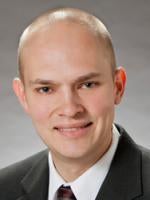Last Friday, Wisconsin’s supreme court announced that it had accepted seven new cases. Three of them are of particular interest to Wisconsin businesses.
In Wis. Pharmacal Co. v. Nebraska Cultures of Cal., 2013AP613/687, the court of appeals addressed whether the negligent provision of an ingredient to a probiotic manufacturer constituted an “occurrence” under a CGL policy. The court of appeals held that there was coverage. We warned that, “[b]arring review by the supreme court, the court’s detailed discussion of the CGL policies will have broad ramifications in future disputes between suppliers and manufacturers.” Apparently the supreme court thinks it necessary to weigh in. The court will take up three issues related to CGL policy interpretation: the grant of coverage, the definition of “occurrence,” and a “business risk” exclusion.
The second case is Johnson v. Cintas Corp. No. 2, where the court of appeals held that a change to Wisconsin’s pre-judgment interest calculation for its “offer of settlement” procedure could not apply retroactively. It is surprising that the supreme court granted review. While the court of appeals’ decision affects the parties, it is not clear why the issue is one of statewide importance. The only cases that could be affected are those where an offer of settlement was made by early 2011. Few of those cases are still unresolved.
In contrast, the third case, UFCW Union, Local 1473 v. Hormel Corp., 2014AP1880, will have a significant, statewide effect on Wisconsin businesses, particularly on manufacturers. Last term we wrote about Weissman v. Tyson, a case addressing the compensability of the time that employees spend “donning and doffing” work clothes. In Weissman, the court of appeals had decided, in a published decision, that the minimal time the employees spent donning and doffing was “hours of work” for which wages must be paid. Just days before the supreme court heard argument in Weissman, the parties settled. This settlement appeared to solidify the plaintiffs’ preferred interpretation of Wisconsin law. The Weissman settlement also benefited parties like Local 1473, an amicus in Weissman and a plaintiff in a parallel case. That parallel case now might unravel whatever the plaintiffs gained by settling Weissman. The issue is returning promptly to the supreme court by way of certification of Local 1473’s case from the court of appeals. The supreme court has been asked to interpret the relevant statutes and regulations and to determine the applicability of a “de minimis” defense first raised in Weissman.
The Court will hear argument in these cases next term. Decisions are expected by July 2016.



 i
i

